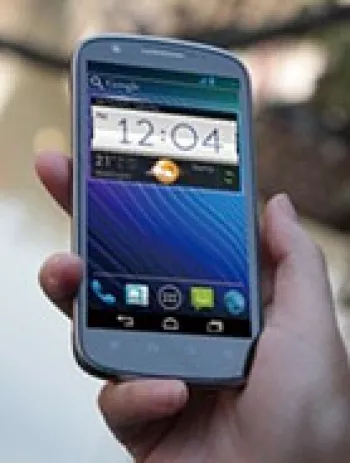
Overview
The ZTE Memo, released in October 2011, is a classic feature phone that harks back to an era where functionality met simplicity. As smartphones were beginning to capture global attention, this device provided users with essential features required for connectivity without the complexities of modern-day smartphones.
Design and Build
The ZTE Memo is designed with a QWERTY keyboard, making it a practical choice for text-heavy users who desire the tactile feedback of physical keys. The phone measures 114 x 61 x 13 mm, providing a compact form factor that fits comfortably in hand. Weighing 111 g, it includes a Mini-SIM slot, enhancing its minimalistic design, primarily presented in a sophisticated gray finish.
Display
The Memo features a 2.4-inch TFT display, capable of showcasing up to 256K colors. This screen, with a resolution of 320 x 240 pixels and a 4:3 aspect ratio, offers essential viewing clarity for its time, providing users with a moderately sharp display for reading text messages and checking call records.
Camera
Equipped with a 2 MP rear camera, the ZTE Memo permitted users to capture basic photographs and videos at 320p. Despite its limitations compared to today's standards, this camera function served well for documenting memorable moments during its era.
Network and Connectivity
The device supports CDMA and EVDO technology, representing the standard network bands for 2G and 3G connectivity at the time. Although WLAN capability is absent, the Memo incorporates Bluetooth 2.1 with A2DP for wireless audio streaming, alongside GPS support for basic navigation needs. A proprietary USB connection permits data transfer and charging, conforming to technological norms of the early 2010s.
Battery Life
Powering the device is a removable Li-Ion 1150 mAh battery, which affords users up to 400 hours of stand-by time and around 5 hours of talk time. This endurance is quite reasonable given the power demands of feature phones from the era, ensuring users could rely on their devices throughout an entire day without frequent recharging.
Memory and Storage
The ZTE Memo includes a dedicated microSDHC card slot, allowing for expandable storage capacity for media and additional content. The onboard phonebook can store up to 1000 contacts, with features like Photocall enhancing user interaction and ease of access.
Operating System and User Interface
A classic feature phone interface governs the ZTE Memo, providing straightforward navigation across SMS, MMS, Email, and IM messaging services. While lacking Java support, the phone includes basic games and ensures users have access to essential communication features.
Entertainment and Sound
Despite its feature phone status, the Memo is designed to offer entertainment options. Users can play built-in games, and support for 3.5mm jack means users can listen to music through standard headphones. The inclusion of a loudspeaker serves for hands-free calling and audio playback.
Conclusion
The ZTE Memo stands as a piece of mobile history, delivering essential communication tools without the complexity of modern smartphones. Its focus on simplicity, combined with the practicality of physical keyboards, marks it as a memorable device for users looking for a straightforward mobile experience. While it is now discontinued, its legacy continues, reflecting a time when mobile phones were transitioning into the versatile devices we use today.
ZTE Memo Key Features
- Compact Design: Dimensions of 114 x 61 x 13 mm and lightweight at only 111 g.
- QWERTY Keyboard: Physical keyboard for easy typing.
- Expandable Storage: microSDHC card slot for additional storage.
- Connectivity Options: Includes Bluetooth 2.1 with A2DP and GPS.
- Multimedia Support: 2 MP main camera and 3.5mm audio jack.
- Decent Battery Life: Removable Li-Ion 1150 mAh battery offering up to 400 hours of standby time and 5 hours of talk time.
- Messaging and Communication: Supports SMS, MMS, Email, and IM.
Disadvantages of ZTE Memo
- Limited Network Technology: Only supports CDMA/EVDO technology, which may not be compatible with all modern networks.
- Discontinued Status: The phone was released in 2011 and is no longer in production, making it difficult to find new units or official support.
- Small Display Size: At only 2.4 inches, the screen is quite small compared to modern standards, making it less suitable for extensive media consumption.
- Low Screen Resolution: The 320 x 240 pixel resolution results in a low pixel density (~167 ppi), which affects screen clarity and detail.
- Weak Camera Features: The main camera is only 2 MP with video capability limited to 320p, and there is no front-facing camera for selfies or video calls.
- No Wi-Fi Connectivity: The absence of WLAN limits the ability to connect to Wi-Fi networks, affecting internet usage and app functionality.
- Older Bluetooth Version: Bluetooth 2.1 is an outdated version that offers slower data transfer rates and limited compatibility with newer devices.
- Proprietary USB Connection: The use of a proprietary USB connection instead of a standard one limits compatibility with common chargers and accessories.
- No Sensors: The lack of sensors like accelerometer or proximity limits the phone's ability to support advanced functionalities and apps.
- No Java Support: The absence of Java support can restrict the usability of certain applications and games that require it.

View Also
More Phones
All Rights Reserved +14267 Phones © Mobilawy 2025

























